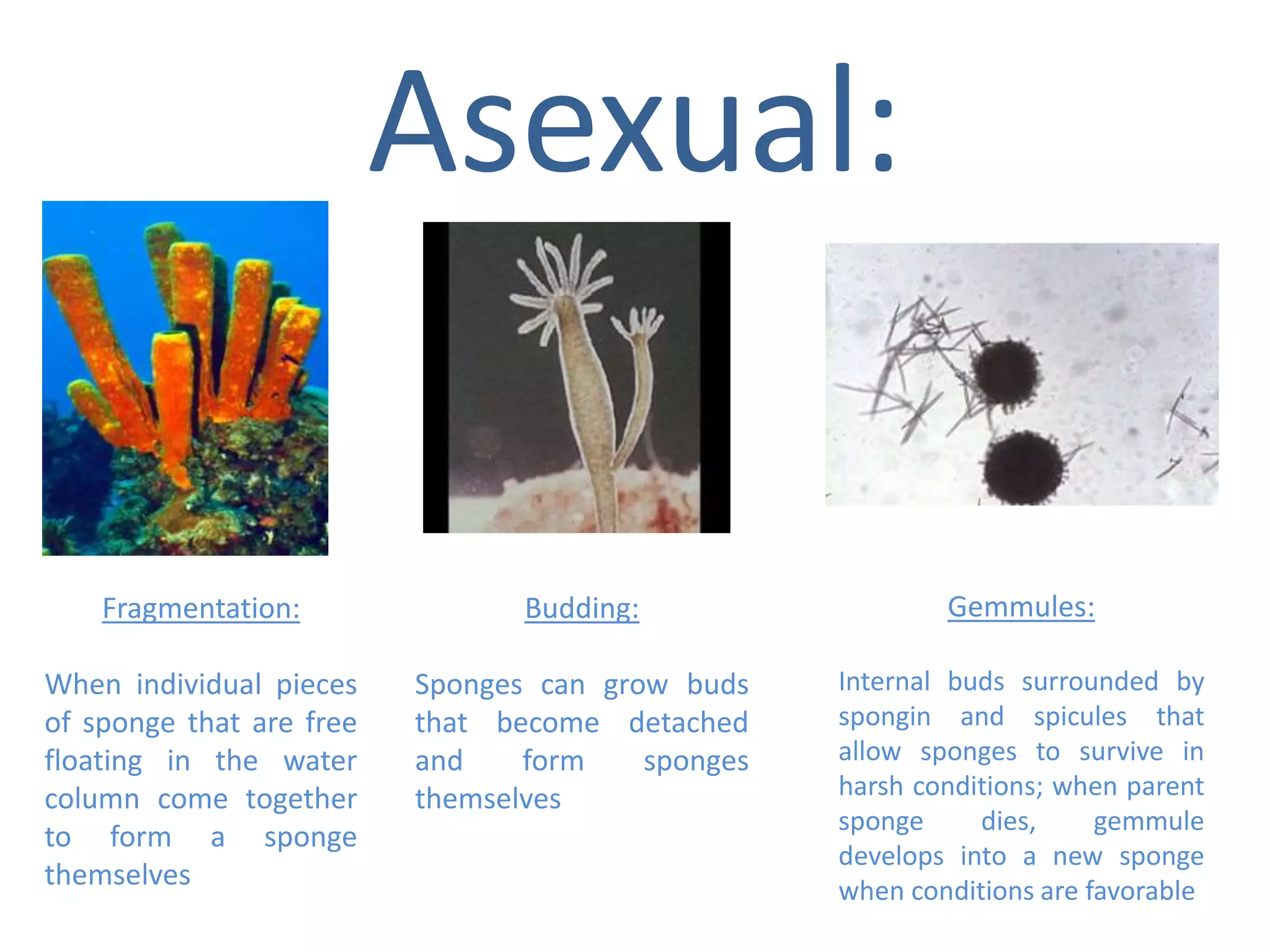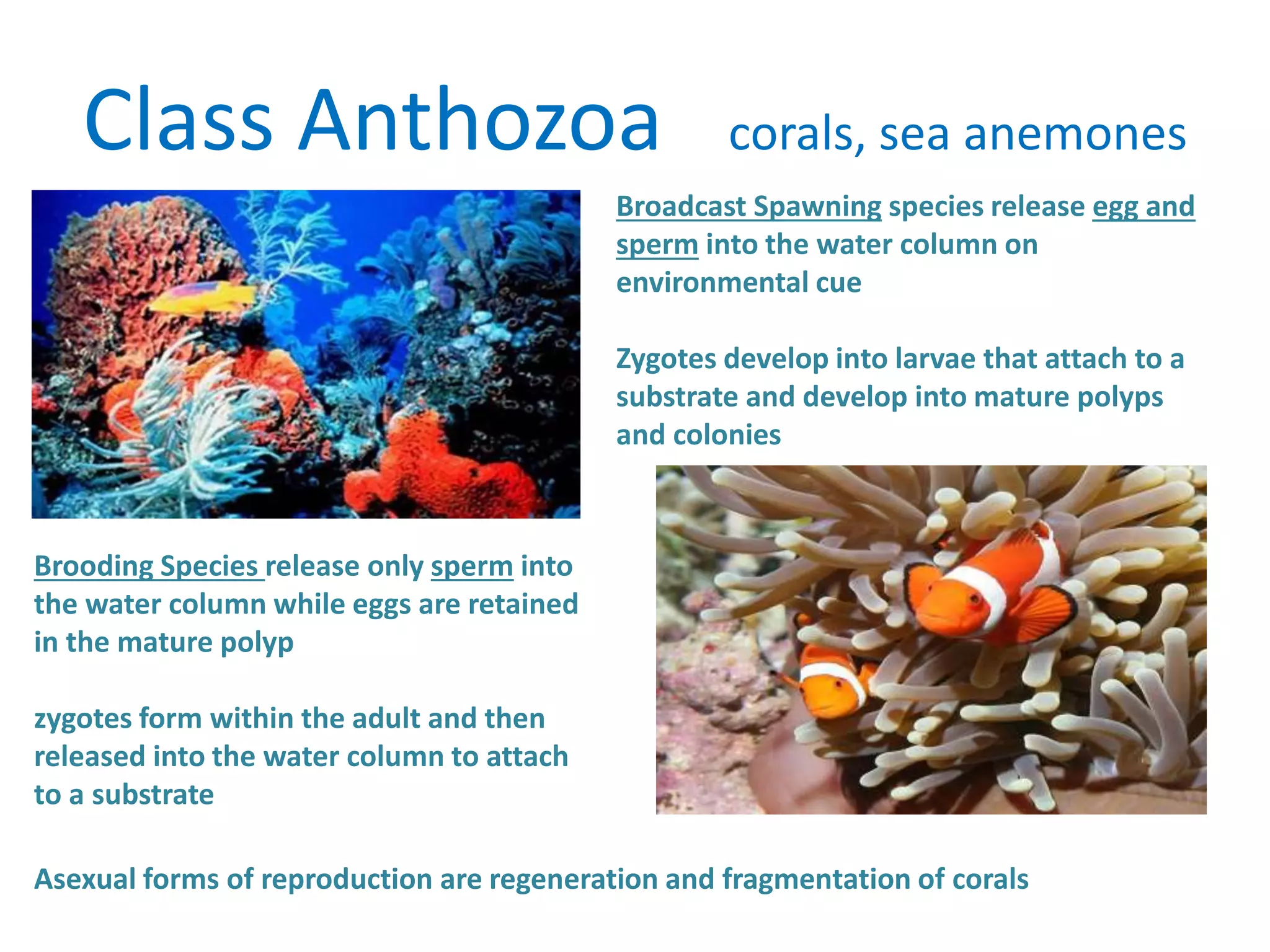The document summarizes the reproductive systems of major animal phyla. Most reproduce sexually with internal or external fertilization, while some can also reproduce asexually through budding, fragmentation, or other means. Reproductive structures and strategies vary widely between phyla from broadcast spawning of gametes to live birth of offspring. The evolution of the amniotic egg allowed for protected development on land in reptiles, birds, and mammals.









































